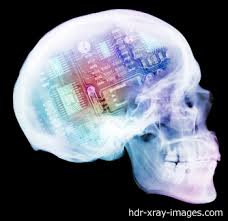Scientists have found that it is possible to selectively manipulate our ability to learn by applying a mild electrical current to the brain.
Researchers said this effect can be enhanced or depressed depending on the direction of the current, a finding which suggests that electrical stimulus can help people learn new or difficult material more quickly.
The medial-frontal cortex is believed to be the part of the brain responsible for the instinctive “Oops!” response we have when we make a mistake.
Previous studies have shown that a spike of negative voltage originates from this area of the brain milliseconds after a person makes a mistake, but not why.
Researchers from the Vanderbilt University in US wanted to test the idea that this activity influences learning because it allows the brain to learn from our mistakes.
“And that’s what we set out to test: What is the actual function of these brainwaves? We wanted to reach into your brain and causally control your inner critic,” said psychologist Robert Reinhart.
Reinhart and Geoffrey Woodman, assistant professor of psychology, used an elastic headband that secured two electrodes conducted by saline-soaked sponges to the cheek and
the crown of the head and applied 20 minutes of transcranial direct current stimulation (tDCS) to each subject.
In each of three sessions, subjects were randomly given either an anodal (current travelling from the electrode on the crown of the head to the one on the cheek), cathodal (current
travelling from cheek to crown) or a sham condition that replicated the physical tingling sensation under the electrodes without affecting the brain.
After 20 minutes of stimulation, subjects were given a learning task that involved figuring out by trial and error which buttons on a game controller corresponded to specific colours displayed on a monitor.
The task was made more complicated by occasionally displaying a signal for the subject not to respond.
For even more difficulty, they had less than a second to respond correctly, providing many opportunities to make errors – and, therefore, many opportunities for the medial-frontal cortex to fire.
When anodal current was applied, the spike was almost twice as large on average and was significantly higher in a majority of the individuals tested (about 75 percent of all subjects across four experiments).
This was reflected in their behaviour; they made fewer errors and learned from their mistakes more quickly than they did after the sham stimulus, researchers found.
When cathodal current was applied, the researchers observed the opposite result: The spike was significantly smaller, and the subjects made more errors and took longer to learn the task.
The effects of a 20-minute stimulation did transfer to other tasks and lasted about five hours.
The study was published in the Journal of Neuroscience.






